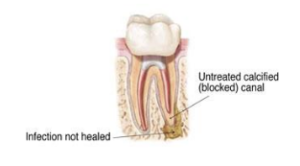endodontic retreatment
If the tooth fails to heal properly after a root canal, you may need to see an endodontist for retreatment. As occasionally happens with any dental or medical procedure, a tooth may not heal as expected after initial treatment for a variety of reasons:
• Narrow or curved canals were not treated during the initial procedure.

• Complicated canal anatomy went undetected in the first procedure.
• The placement of the crown or other restoration was delayed following the endodontic treatment.
• The restoration did not prevent salivary contamination to the inside of the tooth.
• In other cases, a new problem can jeopardize a tooth that was successfully treated. For example:
• New decay can expose the root canal filling material to bacteria, causing a new infection in the tooth.

• A loose, cracked or broken crown or filling can expose the tooth to new infection.
• A tooth sustains a fracture.
During retreatment, the endodontist will reopen your tooth and remove the filling materials that were placed in the root canals during the first procedure. The endodontist then carefully examines the tooth, looking for additional canals or new infection. The endodontist then removes any infection, cleans and shapes the canals, and places new filling materials. The opening is then sealed with a temporary filling. Once the tooth heals, a new crown or other restoration is placed on the tooth to protect it.
